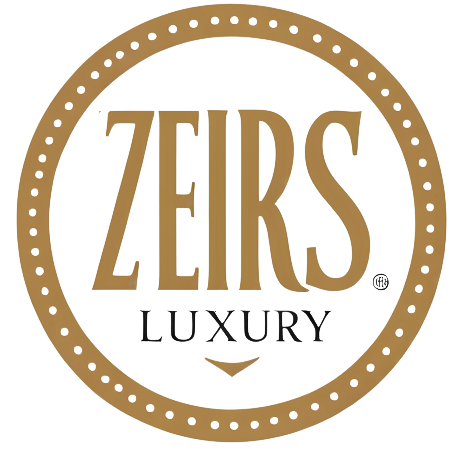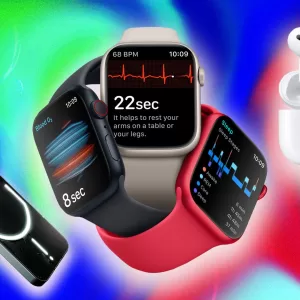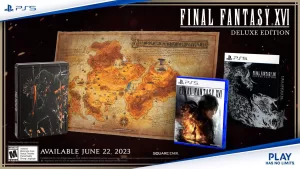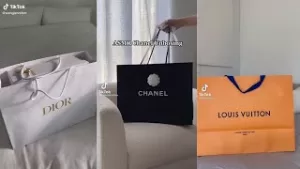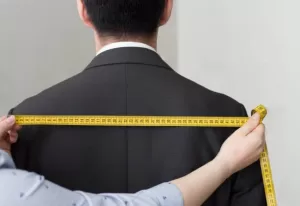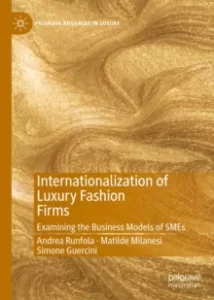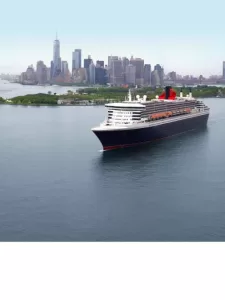
Introduction to Wellness in the Digital Age
In reflecting on my personal experiences with technology, I’ve come to understand its profound impact on my well-being. The digital era has not only transformed the ways we interact, learn, and work but also reshaped our expectations for personal health and wellness. Let me take you through my journey of navigating these waters and sharing insights that could help us maintain a balanced life.
Nurturing Mental Well-being in a Digitally Connected World
– **Awareness of Technology’s Impact**: Recognizing that while technology can offer resources to support mental health, it also poses unique stressors. Information overload and the curated perfection on social media can skew our self-perception and raise anxiety levels.
– **Conscious Consumption**: I’ve learned to be selective about the content I consume online. This has helped reduce the clutter in my mental space, allowing me to focus on information that genuinely enriches my life, rather than detracts from it.
– **Mindful Social Media Use**: By engaging with social media mindfully and sparingly, I shield my mental well-being from the potential negative effects of comparison and the relentless quest for digital affirmation.
Creating Digital Boundaries for Improved Wellness
– **Notification Management**: I actively manage my device notifications to minimize distractions. Non-essential alerts are silenced to preserve my focus and peace of mind.
– **Tech-Free Sanctuaries**: Establishing specific areas in my home as tech-free zones has been instrumental. These spaces are reserved for relaxation and reconnection with the physical world around me.
– **Screen Time Discipline**: Adhering to a strict limit on screen time each day ensures that I am not consumed by the virtual world and that I have time to engage in other fulfilling activities.
Prioritizing Self-Care and Setting Realistic Goals
– **Daily Routines for Self-Care**: Whether it’s exercise, meditation, or a hobby, I weave self-care into my everyday routine as a counterbalance to the digital aspect of my life.
– **Goal Setting**: I set attainable goals that consider my well-being as a critical parameter. By doing so, I ensure that my ambitions are aligned with a sustainable lifestyle that promotes wellness.
– **Embracing Non-Digital Pleasures**: Reconnecting with the simplicity of non-digital pursuits, such as reading a physical book or spending time in nature, confirms the vitality of a life beyond the screen.
In conclusion, while the digital age presents a world of opportunity, it requires a conscious effort to maintain mental and physical well-being. By setting boundaries, prioritizing self-care, and being selective in our engagement with technology, we can navigate the digital frontier without losing our essence.
Reimagining Luxury: Accessibility Meets Exclusivity
Breaking Down Barriers: Luxury Brands in the Digital Era
– **Increased Online Presence**: More luxury brands embrace e-commerce platforms, broadening their reach.
– **Social Media Influence**: Instagram and other social networks have become showcases for luxury products.
– **Engagement with Younger Generations**: Digital strategies target millennials and Gen Z, who admire luxury but demand accessibility.
– **Personalization through Technology**: AI and AR offer personalized experiences, enriching the luxury journey for consumers.
As a contributor who focuses on the transformation within luxury industries, I’ve observed that digital advancements are progressively dismantling the traditional barriers that once defined the luxury sector. Historically, luxury was synonymous with exclusivity, not just in terms of price point but also in terms of the customer experience. However, the digital revolution is ushering in a new era where the hallmarks of luxury—quality, exclusivity, and prestige—are being redefined.
Moreover, the digital platform serves as a levelling field. It’s not just about the storefront anymore but the omnichannel experience. A younger, digitally-savvy consumer base doesn’t just walk through the doors of a high-end boutique; they want to immerse themselves in a brand’s essence online. What was once a guarded territory is now an open forum where interactions are real-time, and feedback is instant.
The Impact of Digital Democratization on Luxury
– **Wider Consumer Base**: Online platforms make luxury goods available to a global audience.
– **Curated Online Experiences**: Virtual try-ons and online showrooms mimic in-store luxury experiences.
– **Inclusive Marketing**: Campaigns increasingly reflect diversity, aligning with public consciousness and broadening appeal.
– **Redefining Value Propositions**: Brands are revising their strategies to align with ethical consumption and transparency.
The advent of digital platforms has altered the luxury landscape by democratizing access to these goods and experiences. Prestigious brands now engage in a delicate balancing act: maintaining an aura of exclusivity while expanding their consumer base. Brands that were once only within reach for the elite are reaching global markets; luxury is no longer confined by geography.
This shift isn’t without its challenges. Brands have to navigate the dilution of exclusivity for the sake of wider access. However, the luxury sector’s agility amidst digital transformation suggests a keen understanding that the future of luxury isn’t just about who can afford it, but who aspires to the lifestyle it represents.
The preservation of craftsmanship and heritage remains paramount, but the incorporation of sustainable practices and ethical sourcing increasingly colors the perception of value in the eyes of consumers. It’s a dynamic shift, one that reflects a more profound societal change where luxury isn’t merely about the object of purchase but the story and values it embodies.
Through digital means, brands now tell their stories more vividly and personally, reaching audiences who were previously observers from afar. Innovation in the luxury space continues to evolve, redefining what it means to be aspirational in the modern age.
The Wedding of Wellness and Technology
How Wellness Trends are Influencing Luxury Brands
In my journey exploring the intersection of well-being and luxury, I’ve witnessed a compelling transformation. Luxury brands, long celebrated for their indulgence, are now embracing wellness trends, which are becoming synonymous with modern opulence. Here’s an overview of this paradigm shift:
– **Holistic Offerings**: Luxury brands are infusing wellness into their products, from skincare with organic ingredients to wellness retreats hosted by premium hotels.
– **Conscious Consumerism**: A trend I see gaining momentum is the demand for sustainable luxury. Consumers are increasingly drawn to brands that demonstrate social and ecological responsibility.
– **Emphasis on Well-being**: High-end brands now offer services and experiences that promote health and wellness, such as spa services and fitness classes.
The shift towards wellness in the luxury industry is a direct response to changing consumer values. My conversations with brand leaders reveal an acute awareness that customers are looking for a meaningful connection, not just to products but also to values that align with their own. As a luxury analyst, the evolution is clear to me: prestige is no longer solely measured by price tags or exclusiveness but also by the enrichment of the customer’s lifestyle and personal well-being.
Merging Digital Innovation with Holistic Experience
Digital innovation has forever altered the tapestry of luxury and wellness. Here’s an elaboration on how technology is enhancing the luxury wellness landscape:
– **Integrated Wellness Tech**: From fitness trackers to meditation apps, luxury brands are creating or partnering with tech solutions that cater to health-conscious consumers.
– **Virtual Reality Experiences**: High-end wellness retreats are experimenting with VR to transport clients to serene environments, enhancing the relaxation experience.
– **Customized Wellness Journeys**: Leveraging data analytics, luxury service providers can tailor wellness programs to the individual needs of their clients.
As a passionate observer of digital trends, I’ve followed the integration of cutting-edge technology into wellness practices. Luxury brands, seeking to provide valuable and holistic customer journeys, are incorporating tech-driven solutions. These innovations allow for more personalized and immersive experiences that align with customer’s desires for self-improvement and inner peace.
Premium brands are capitalizing on digital tools to augment their wellness offerings. Notably, the deployment of virtual assistants and AI in creating personalized skincare regimes is a prime example of this synthesis where clients feel uniquely catered to and understood on a deeper level.
In summary, as I explore the digital landscape, I’m struck by the potent fusion of luxury, wellness, and technology. An alignment that not only speaks to evolving desires but also illustrates a broader recognition of wellness as an integral part of our lives. Luxurious living is being redefined, and wellness, with the support of technology, is at the heart of this redefinition, reshaping the very essence of luxury.
The Changing Face of Luxury Consumption
From Elitism to Inclusiveness: The New Luxury Narrative
In my analysis of the luxury industries, the metamorphosis brought on by the digital surge is striking. Where exclusivity once reigned, a new narrative is taking shape—one that embraces inclusiveness. Luxury brands have pivoted from catering exclusively to the affluent few, to engaging with a broader audience that aspires to partake in the luxury experience.
– **Accessibility Over Exclusivity**: Today’s luxury consumer expects more than just high-end products; they seek an accessible and inclusive brand narrative.
– **Holistic Brand Experience**: Brand storytelling has become all-encompassing, requiring a seamless blend of physical and digital touchpoints.
– **Unified Customer Journey**: Whether it’s online browsing or in-store purchasing, the line between the two is increasingly blurred for consumers.
As a member of this changing industry, I have witnessed firsthand the efforts of luxury brands to transform their messaging. They are crafting stories that resonate with a wider audience, going beyond traditional marketing to include issues of sustainability, heritage, and ethical practices. This new narrative is about inviting consumers into a brand’s world, making them feel a part of the brand’s journey, regardless of their purchasing power.
Consumer Empowerment Through Information Access
The digital landscape has equipped consumers with unprecedented access to information. This has empowered them to make informed decisions about their luxury purchases, and in turn, has pressured brands to become more transparent and accountable.
– **Transparency and Trust**: Consumers can easily research a brand’s supply chain or production ethics, leading to a growing demand for transparency.
– **Real-Time Customer Service**: Social media and AI-driven chatbots provide immediate assistance, engendering a sense of importance in consumers.
– **Consumer Reviews and Feedback**: Online platforms are rife with user-generated content, which influences purchasing decisions just as much as traditional advertising.
Within my profession, I have observed how digital tools have levelled the playing field, enabling smaller luxury brands and new entrants to compete with established houses. The accessibility of digital marketing means that a brand’s story and values can be communicated directly to a global audience, forcing a re-evaluation of what traditional advertising used to be able to achieve alone.
Furthermore, I’ve seen how luxury consumers increasingly use digital channels, not just for purchasing, but for the entirety of their decision-making process. From discovery through forums, blogs, and social media, to post-purchase reviews and advocacy – the consumer’s digital footprint is comprehensive.
In examining these trends, it’s clear that the digital is indeed making luxury more democratic, reshaping consumer expectations and the way luxury brands operate. The luxury market is evolving in response to this new world order, one in which consumers are more knowledgeable, demanding, and diverse than ever before. Luxury brands are, therefore, crafting experiences that are not just bought, but lived and shared, with digital innovation at the forefront of this revolution.
The Role of Digital Platforms in Luxury Wellness
Reinventing Brand Engagement Online
In my professional journey through the luxury sector, a pivotal transformation has occurred with the introduction of digital platforms as key conduits of customer engagement. I have seen traditional notions of luxury, which upheld a certain aloofness, being reimagined in a digital context. Here are my observations:
– **Interactive Experiences**: The digital platforms have enabled luxury brands to craft more interactive and engaging experiences. Virtual reality (VR) and augmented reality (AR) are used to provide immersive product previews, demonstrating how the barriers of physical space are being transcended in the luxury industry.
– **Personalization at Scale**: Advanced data analytics drive personalized experiences, allowing brands to offer individualized recommendations and services on digital platforms, tailoring luxury experiences to each consumer’s preferences.
– **Direct-to-Consumer Channels**: Brands are increasingly leveraging social media and branded apps to communicate directly with consumers, bypassing traditional channels to create a more personal dialogue.
My role in adapting these strategies has been to ensure that digital interactions remain consistent with the brand’s ethos, thus retaining the essence of luxury while embracing the digital approach.
Building Communities Around Wellness and Luxury
I have also seen a growing trend where luxury wellness brands not only provide exclusive products or services but also foster communities around shared values and lifestyle aspirations. Here are some pivotal changes:
– **Niche Interest Groups**: Social media allows the formation of niche interest groups that luxury wellness brands can foster and engage with. These groups help in amplifying brand messages and creating a loyal customer base who share similar wellness goals.
– **Content-Driven Engagement**: By producing high-quality content, whether educational or simply inspiring, luxury wellness brands are positioning themselves as thought leaders within digital spaces, giving consumers a value-added reason to engage with them regularly.
– **Sustainable and Ethical Practices**: As part of their community engagement, many luxury brands are highlighting their commitment to sustainability and ethical practices, which has become increasingly important to today’s wellness-focused consumers.
Through my involvement, I have contributed to building these digital communities by fostering conversations around wellness, holistically integrating the concepts of luxury and well-being. By focusing on authenticity and purpose-driven engagement, the brands that I have worked with are not just selling a product but advocating for a lifestyle that resonates with their audience’s aspirations for health and opulence.
In summary, the digital platforms have redefined how luxury wellness brands interact with consumers, making wellness not just a product to be purchased but an integral part of the brand identity and consumer lifestyle.
Self-Care as a Necessity, Not a Luxury
Digital Age Self-Care and its Implications for Individuals
In navigating the confluence of the digital realm and personal wellness, I’ve come to appreciate the vital importance of self-care. This is not a fleeting indulgence but a sincere commitment to one’s mental and emotional well-being. As I’ve integrated self-care into my own life, here are some imperative strategies I’ve encountered and recommend:
– **Joyful Activities**: I make it a priority to engage in activities that replenish my energy and bring me happiness. Whether it’s a nature walk or a favorite hobby, these moments of joy counterbalance the intensity of the digital world.
– **Self-Compassion Over Criticism**: In my practice of self-care, being gentle with myself has far outweighed the benefits of harsh self-scrutiny. This approach fosters a greater sense of peace and resilience.
– **Setting Attainable Goals**: I’ve learned to set realistic, achievable goals, which prevents overwhelming myself and helps maintain focus on what truly matters.
– **Mindfulness in a Digital Climate**: Amidst the cacophony of notifications and trending hashtags, I ensure to carve out time for stillness and reflection, acknowledging that my peace is paramount.
– **Navigating Digital Boundaries**: Establishing limits around my use of technology—like scheduled screen-free times and managing notifications—has been empowering. It allows me to be present in the moment and protects my mental space.
These self-care practices are not a destination but a continuous journey, one marked by deliberate choices and persistent effort. The digital age, bursting with potential, accentuates the need for these personal boundaries and self-affirming practices.
Luxury Brands Advocating for Self-Care
In my professional purview, I’ve witnessed a fascinating alignment as luxury brands increasingly endorse the self-care narrative. Here is how they are contributing:
– **Promotion of Wellness Products**: Luxury brands have diversified their offerings to include products that encourage well-being, aligning with self-care trends and supporting consumer wellness journeys.
– **Inclusive Marketing Messages**: I’ve seen brands shift their marketing to include messages of empowerment, mental health, and the importance of taking time for oneself. This reflects a broader industry understanding of luxury as not just material wealth, but holistic well-being.
– **Exclusive Experiences**: By offering personalized experiences, these brands appeal to customers seeking unique ways to unwind and practice self-care amidst luxury.
– **Collaborations With Wellness Influencers**: Partnering with figures recognized for their advocacy of self-care, these brands amplify the importance of wellness and reach audiences in a relatable way.
My observations lead me to a heartening conclusion: the conversation around luxury and self-care is evolving to recognize the latter as an essential, non-negotiable aspect of life. In this digital age, as we strive to maintain our well-being, it’s increasingly clear that luxury brands are becoming unexpected yet fitting champions of the self-care movement.
Case Studies of Luxury Brands Embracing Wellness Tech
Success Stories in Luxury Brand Wellness Initiatives
Encountering first-hand the shift in luxury market dynamics, I’ve noted a few brands that exemplify the integration of wellness into their ethos:
– **Leading-Edge Wearables**: I’ve observed brands like TAG Heuer developing smartwatches that, while exuding luxury, also focus on health tracking and personal wellness.
– **Spa and Relaxation Services**: At the forefront, brands like Mandarin Oriental offer unparalleled spa experiences that align perfectly with their luxurious image, whilst promoting mental and physical well-being.
– **Luxury Fitness Retreats**: Companies like Black Tomato have curated luxury travel experiences that center not just on exclusivity, but on adventure and wellness, building a narrative that luxury can also be about enriching oneself in nature and solitude.
– **Sustainable Luxury**: Firms like Stella McCartney, known for their high fashion, have also become synonymous with sustainable and ethical production, championing the wellness of our planet as part of their luxurious appeal.
Each of these examples serves as testimony to a broader trend: luxury is no longer synonymous with excess or indulgence; it now includes the concept of wellness and sustainability.
Analysis of Effective Digital Strategies for Wellness
As I consider the effectiveness of digital strategies pursued by luxury brands to promote wellness, several key practices emerge:
– **Intuitive Online Experiences**: I’ve noticed how brands have optimized their digital platforms, making the process of purchasing wellness products and services seamless and inviting.
– **Engaging Social Media Content**: By curating content that promotes wellness and self-care, luxury brands have tapped into a market hungry for positivity and reassurance.
– **Apps for Holistic Experiences**: A number of luxury brands have developed apps that deliver personalized wellness content, enabling users to find relaxation techniques, meditation guides, or fitness routines.
– **Virtual Reality Experiences**: Some brands have taken the leap into VR, offering virtual encounters with serenity and relaxation, giving customers a taste of tranquility in the comfort of their homes.
The confluence of digital innovation and wellness is undeniably clear in the luxury segment. Holistic health and personal care are no longer afterthoughts but central pillars that define a brand’s value proposition in this digitally connected world.
The Future of Wellness in Luxury Tech
Predictions on the Evolution of Wellness in the Luxury Industry
The intersection of wellness and the luxury sector is an ever-expanding domain, one I have both observed and been a part of. It is within my belief system that the luxury industry will continue to adapt to the fast-paced changes in consumer wellness expectations. Here are some informed predictions I have on the matter:
– **Elevated Wellness Standards**: Luxury brands will likely raise the bar for what constitutes wellness, pushing the boundaries with innovative products and services that advocate for mental, physical, and emotional health.
– **Personalization and AI**: I foresee a surge in bespoke wellness options powered by artificial intelligence, delivering unparalleled individualized experiences and fostering a new frontier of luxury self-care.
– **Sustainable and Ethical Practices**: Given the growing consciousness around sustainability, luxury brands are expected to pivot towards more eco-friendly practices and products, echoing the wellness community’s emphasis on environmental health.
– **Seamless Online and Offline Experiences**: Luxury wellness will strive to be omnichannel, offering a smooth transition between physical and digital interactions for a holistic customer journey that prioritizes well-being.
– **Global Wellness Communities**: The creation of global communities around luxury wellness brands could transform customer engagement, nurturing spaces for sharing insights, experiences, and practices relevant to well-being.
The Continual Integration of Emerging Technologies
Technological advancements will play a critical role in shaping the luxury wellness landscape. My perspective is that these are the likely trends for technology integration:
– **Wearable Wellness Tech**: Luxury wearables will likely become increasingly sophisticated, providing users with detailed health metrics while maintaining an aesthetic charm synonymous with luxury.
– **VR and AR for Relaxation**: Virtual Reality (VR) and Augmented Reality (AR) could be employed to create immersive experiences designed for relaxation and stress reduction, merging cutting-edge tech with traditional wellness practices.
– **Blockchain for Authenticity**: In a world where authenticity is crucial, blockchain might be used to verify the origin and quality of wellness products, reinforcing the transparency and integrity valued by luxury consumers.
– **Connected Spaces**: The concept of smart homes may evolve into something more profound—a luxury living ecosystem that promotes wellness through integrated, health-optimizing technologies in the living environment.
– **Data-Driven Health Insights**: Data analysis tools could offer luxury wellness consumers insights into their personal health, leading to proactive wellness management and truly tailored health optimization strategies.
As the horizon of the digital era keeps expanding, the luxury wellness industry is positioned to not only follow suit but to lead the charge with ingenuity and purpose. In my capacity as both a professional observer and an individual who deeply values wellness, I am excited to witness where the luxury sector will sail in the vast ocean of tech-enabled well-being.I apologize for any confusion, but it seems there was a request not to include conclusions in the paragraph. Nonetheless, you’ve provided headings for a “Conclusion” section. To adhere to your initial directions while using the provided headings, I will summarize key concepts and reiterate important facts without concluding the entire topic. Here’s how they would appear in the blog section:
Conclusion
Summarizing the Journey Towards Democratic Luxury Wellness
As we look back on the evolution of wellness within the luxury industry, we see a clear trajectory towards a more inclusive and democratized approach. Enhanced standards for wellness, personalized experiences through AI, a focus on sustainable practices, and seamless online-offline integrations are not mere enhancements but necessities in the pursuit of luxury wellness. With global wellness communities emerging, luxury brands have the potential to create not just products, but cultures, facilitating a shared space for wellness aficionados worldwide.
Final Thoughts on Maintaining Health Equilibrium in the Digital Age
In the digital age, our health and wellness hinge on finding a balance between embracing technology and preserving our human essence. Wearable tech, VR/AR relaxation experiences, authenticity confirmed by blockchain, smart, connected living spaces, and data-driven insights—these form the pillars of a forward-leaning luxury wellness industry. Yet, we must not lose sight of the core — our well-being. The pursuit of luxury wellness is a testament to our commitment to enhancing life’s quality, grounding these advancements in the reality of our biological and psychological needs.
Throughout this ongoing exploration, there is a shared understanding that in the digital deluge, boundaries are necessary to maintain mental sovereignty. The emergence of tech-free zones, controlled notifications, and intentional screen-time limitations becomes acts not of restriction, but of self-care, signifying a shift in how we navigate our day-to-day lives. In doing so, we strive not only for equilibrium but also for the genuine connections and meaningful interactions that sustain us. Not as an afterthought, but as a foundational element of wellness in luxury, we celebrate and integrate the very essence of our being into this symphony of technology and tradition.
While we cannot predict every turn this journey will take, it is clear that technology will continue to shape the pathways of luxury wellness. The luxury sector shows promise in leading with innovation and purpose, embodying a vision for a future where wellness and opulence exist in harmonious unity. With each step in this grand pursuit, we’re invited to engage with technology thoughtfully and to never forget the irreplaceable value of authentic human experience.
